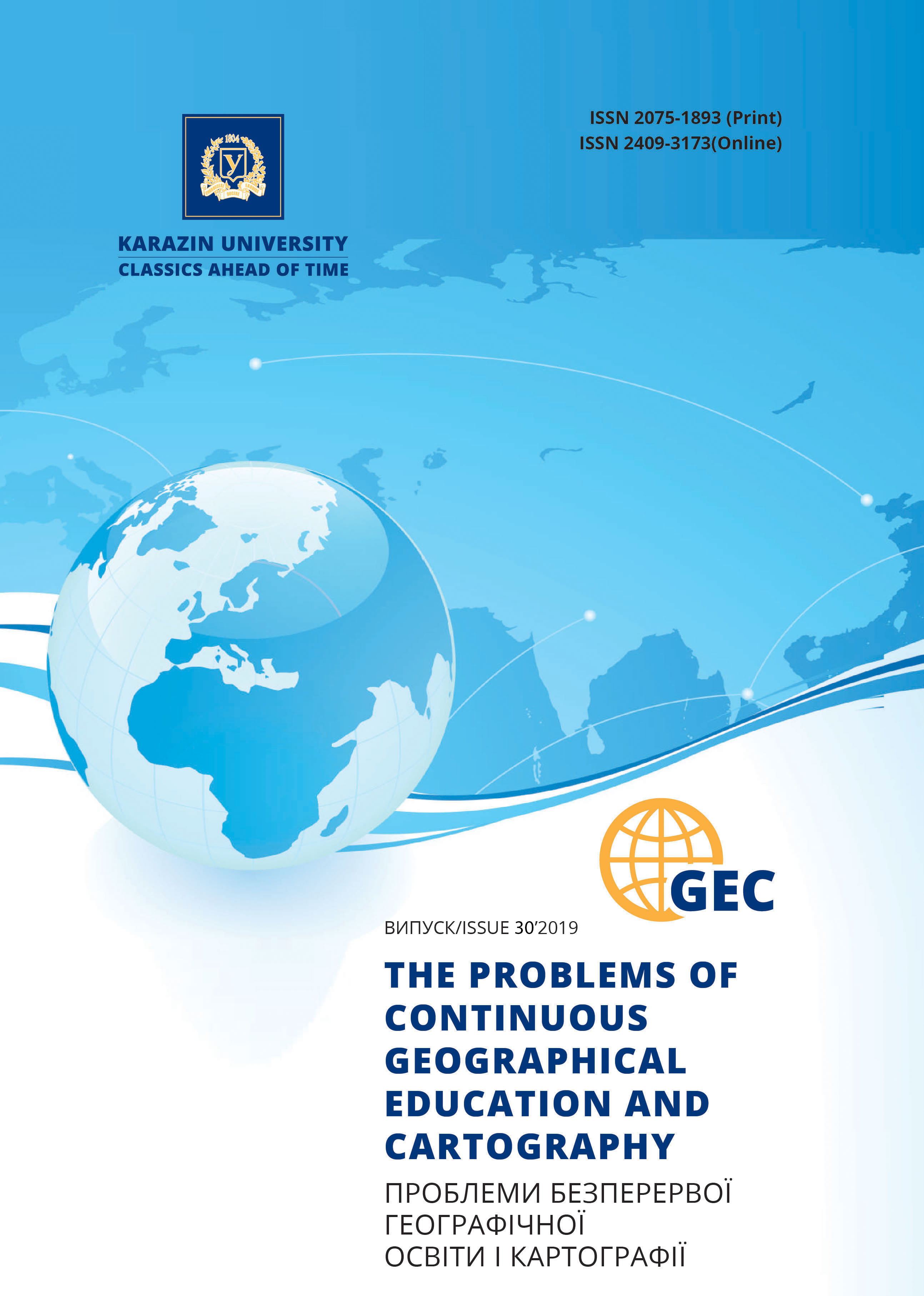Map «Ukrainian Crimea» as a geospatial information source
Abstract
The purpose of the article is to familiarize with the publication of the map «Ukrainian Crimea», prepared by experts - geographers, cartographers and historians; to draw attention to the importance of counteracting Russian propaganda in the information war; to outline approaches to creating this mapping work.
The main material. In the face of the hybrid aggression of the Russian state against Ukraine, in which much attention is paid to propaganda, the publication of geospatial information sources that debunk propaganda myths is an important element of defense. It was the idea of the creators of the map «Ukrainian Crimea», which was published on the basis of the scientifi c-production fi rm «Maps and Atlases». The map presents a comprehensive and systematic picture of Crimea in geospatial and historical aspects. In addition to the map itself, the cartographic work is supplemented by illustrative and textual material. On the main map in scale 1 : 1 250 000 the main attention is paid to large infrastructural projects realized by the Ukrainian forces after the transfer of the peninsula to the Ukrainian SSR because of economic decline of the region due to the deportation of the Crimean Tatars (in particular, the irrigation of North Crimean Channel turned dry-steppe semi-desert landscapes to areas of intensive agriculture). Another focus of the main map is the repression of the occupying power against the pro-Ukrainian movement after the annexation. The historical retrospective shows the kaleidoscopic of the rulers and dozens of Crimean peoples.
Conclusions and further research. The map thus dispels the myth of Russian propaganda that the peninsula has allegedly always belonged to Russia. It relies on the real research of scientists, not on the perverted facts or even outright lies, which are used by the propagandists of the «Russian world». Scientifi c novelty and practical signifi cance lies in the complex coverage by the cartographic method of illegal occupation of part of the Ukrainian territory by the Russian Federation and its subsequent annexation. This is important in the context of Russian hybrid aggression. The map «Ukrainian Crimea» will promote further development of thematic regional mapping in Ukraine, in particular, continuation of a series of maps «United Ukraine» may be maps of Eastern Slobozhanshchina, Taganrozhchina, Kuban, etc.
Downloads
References
Isayev, D.V., ed. (2012). Atlas istoriyi Ukrayiny` [Atlas of History of Ukraine]. Ky`yiv: DNVP Kartografiya, 152.
Gry`celyak, V.P., author-composer (2013). Atlas istoriyi ukrayins`koyi derzhavnosti [Atlas of History of Ukrainian Statehood]. L`viv: NVF Karty` i Atlasy`, 128.
Loza, Yu.I., ed. (2015). Istory`chny`j atlas Ukrayiny` [Historical Atlas of Ukraine]. Ky`yiv: Mapa, 320.
Sergijchuk, V.I. (2001). Ukrayins`ky`j Kry`m [Ukrainian Crimea]. Ky`yiv: Ukrayins`ka Vy`davny`cha Spilka, 304.
Karta «Soborna Ukrayina» (2009) [Map of United Ukraine, scale 1: 3 500 000]. L`viv: NVF Karty` i Atlasy`.
Karta Ukrayins`ky`j Kry`m (2017) [Map of Ukrainian Crimea, scale 1: 1 250 000]. L`viv: NVF Karty` i Atlasy`.
Copyright (c) 2019 Володимир Грицеляк, Ігор Дикий, Іван Ровенчак

This work is licensed under a Creative Commons Attribution 4.0 International License.





